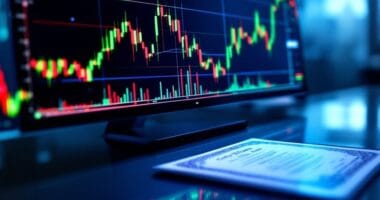Macroeconomics examines the big economic picture – how entire nations manage money, jobs, and growth. It’s the study of large-scale trends like inflation, unemployment rates, and GDP that shape our financial world. While regular folks worry about their wallets, macroeconomists obsess over interest rates and international trade patterns. This bird’s-eye view of economics helps governments and central banks make decisions that impact everyone’s daily life. The deeper story reveals how these forces actually control our economic destiny.

While economists love to debate the finer points of financial theory, macroeconomics cuts straight to the big picture. It’s the branch of economics that looks at the entire economy, tackling the heavy hitters like inflation, unemployment, and economic growth. Think of it as the bird’s eye view of how money moves through a nation. No microscopes needed here – just big, sweeping observations about what makes economies tick.
Forget the financial nitty-gritty – macroeconomics zooms out to show how nations manage money, jobs, and economic health.
The field really took off in the 1940s, but the ideas behind it had been brewing for centuries. Then along came John Maynard Keynes in 1936 with his General Theory, and boom – economics would never be the same. Before him, economists just lumped everything together. How quaint. The central bank manages the economy through monetary policy tools, controlling interest rates and money supply to maintain stability.
Want to know if an economy is healthy? Look at the indicators. GDP shows how much stuff a country produces. Unemployment rates tell us if people have jobs. And inflation? Well, that’s the sneaky force making everything more expensive year after year. These numbers paint the big picture of a nation’s economic well-being. Economists rely on primary data sources to ensure their analysis remains accurate and reliable.
Modern macroeconomics is obsessed with a few key areas. Long-term growth (because who doesn’t want more money?), business cycles (those annoying ups and downs), and international trade (because no economy is an island). Environmental policies are the new kid on the block, forcing economists to think green. Interest rate changes significantly influence stock market performance by affecting companies’ borrowing costs and investor behavior.
The field is split into different camps, each convinced they’ve got it figured out. Keynesians love government intervention when things go south. Monetarists can’t stop talking about controlling the money supply. Classical economists? They think markets can fix themselves – how convenient.
Here’s why it matters: governments need macroeconomics to make smart decisions about policy. Without it, they’d be flying blind. Businesses use it too, planning their strategies based on where they think the economy’s headed. It’s not perfect – economists still argue about everything – but it’s the best tool we’ve got for understanding how economies work at the national level.
Frequently Asked Questions
How Does Macroeconomics Affect My Daily Life and Personal Finances?
Macroeconomic conditions influence daily purchasing power, job security, borrowing costs, and investment returns. Interest rates affect mortgage payments, while inflation impacts grocery prices and overall financial planning decisions.
What’s the Difference Between Economic Growth and Economic Development?
Economic growth measures quantitative increases in output and GDP, while economic development encompasses qualitative improvements in living standards, including education, healthcare, and overall societal well-being through long-term structural changes.
Can Macroeconomic Policies Effectively Control Inflation in All Situations?
Macroeconomic policies cannot control inflation effectively in all situations due to external factors like global commodity prices, international trade dynamics, and supply chain disruptions beyond domestic policy control.
How Do International Trade Agreements Impact Domestic Macroeconomic Conditions?
International trade agreements substantially influence domestic economies through GDP growth, price stabilization, employment shifts, and investment patterns. They shape monetary policy decisions and affect overall economic performance through market integration.
Why Do Some Macroeconomic Models Fail to Predict Economic Crises?
Macroeconomic models fail because they oversimplify complex market dynamics, assume perfect efficiency, ignore external factors, underestimate financial risks, and struggle to account for unexpected events and human behavioral patterns.





